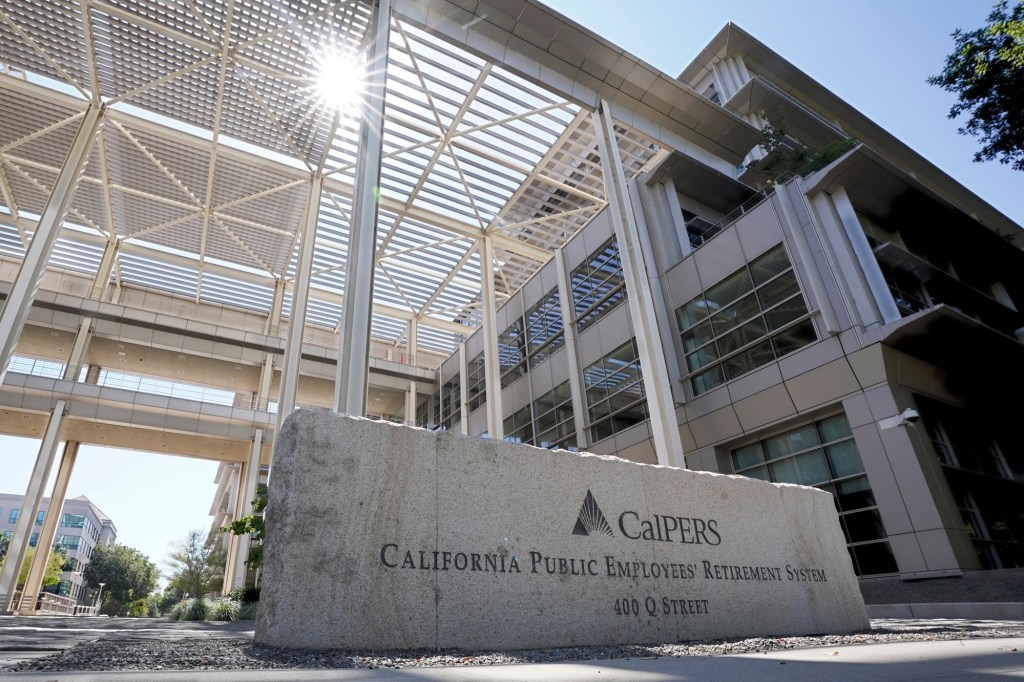The California Public Employees Retirement System reported an unfunded liability of $180 billion in its most recent announcement. In order to mitigate this debt, the nation’s largest pension fund has recently given the green light to a strategy aimed at amplifying investments in private markets and reinforcing approaches that have yet to yield results and pose considerable risks to taxpayers.
Investments in private markets encompass the ownership of privately traded assets such as private loans, real estate, private equity, and venture capital enterprises. CalPERS aims to boost its investments in private equity and private credit by 20%, thereby constituting 40% of its overall portfolio.
This increase necessitates a reduction in public stock and bond acquisitions. Over the last two decades, the CalPERS portfolio has attained an average annual return of 6.7%. If the fund manager had chosen to invest in a passive 60/40 public equity/bond index portfolio, it would have realized an average annual return of 7.7%. Furthermore, CalPERS has not surpassed the performance of the S&P 500, which yielded a return of 9.7% over the same duration. This lag in returns is consistent regardless of whether one examines the past 5-, 10-, or 15-year intervals.
Private investments are often seen as yielding higher returns compared to public markets and are frequently promoted as a method for diversifying portfolios. Nevertheless, these assurances often fall short when accounting for risks, fees, and market conditions. Although present in pension investment portfolios, private equity on paper is CalPERS’ top-performing asset class, boasting a 20-year annualized return of 12.3%. However, this figure reflects the earlier phases of private equity, when there were fewer investors vying for deals and achieving higher returns was less challenging. According to many assessments, private returns since 2008 have not been as impressive, falling short of the public market on a fee basis and significantly on a risk-adjusted basis.
The budget for CalPERS for 2023-2024 designates $790 million for administrative expenses and an additional $1.7 billion for management fees from third-party investments, raising the annual management expenses of the pension fund to $2.5 billion. Despite these substantial management costs, CalPERS’ average return over a span of 23 years is only 5.6%, well below the anticipated return of 7.6% within the same timeframe.
CalPERS is not isolated in this situation. The transition toward private investments mirrors a trend among numerous public pension systems to embrace higher risks in a bid to counter chronic underperformance and escalating unfunded liabilities.
If CalPERS does not meet its projected investment returns, the state of California and local governing bodies, or taxpayers, will be solely accountable for addressing any ensuing deficits. Public pension commitments are legally enforceable. They carry no defaults. Consequently, if investments in public pension plans fail to meet expectations, government employers, or taxpayers, must compensate for the difference.
As investment returns continued to trail expectations, CalPERS was compelled to revise its liability estimates, with the state’s unfunded pension liability projected to reach $90 billion in 2023. Notably, this figure reflects only state obligations. Local governments possess approximately the same magnitude of unfunded debt. To mitigate this, taxpayer contributions to government employers had to rise from the equivalent of 19.5% of payroll in 2014 to 32.4% in 2023.
These escalating pension expenses are leaving the cities, counties, and school districts of California with reduced funds for public services, including education, infrastructure, and public safety. Should funding deficiencies persist, governments will confront tough decisions: increase taxes, issue bonds (thereby escalating long-term debt), or cut services.
However, an alternative may exist. Since 2000, CalPERS has recorded an average return of 5.6% over 23 years. In comparison, the Nevada Public Employees Retirement System, with a fund size of $58 billion, took on less risk than CalPERS and achieved a return of 6.9% during the same period. Nevada PERS accomplished these returns with just three employees managing the fund, thereby controlling costs and enhancing long-term returns by investing almost exclusively in publicly traded index funds.
CalPERS must emphasize proven and effective strategies that diminish costs and consistently yield superior benefits to taxpayers and public officials. Instead of intensifying its commitment to costly, high-risk, and underperforming private investment tactics, CalPERS should adopt more efficient, lower-cost investment strategies, such as utilizing index funds that demonstrate superior performance across all metrics.
Mariana Trujillo is a policy analyst at the Reason Foundation, where she focuses on the Government Fiscal Transparency Project, which investigates state and local government debt.

